Road Test: 2014 Dodge Durango Citadel
The streets are awash in midsized crossover vehicles. Whether you’re shopping for nuts at the hardware store, picking up the offspring at the local rink or ordering a double-double at the drive thru, big crossovers have replaced minivans as the new mode of Canadian family transport. Yet one three-row crossover that often gets overlooked is the Dodge Durango.
After a two-year hiatus, the Dodge Durango returned in 2012 as a proper, 21st-century, midsized crossover. As one of the last co-op projects between Chrysler and Mercedes-Benz, the Durango ditched its predecessor’s archaic body-on-frame (truck-based) chassis for a lighter and more space-efficient unibody (car-based) platform that also underpins the Mercedes-Benz ML and GL-Classes and the Jeep Grand Cherokee.
Because of its high-priced upbringing, the Dodge is priced at the high-end of a gaggle of midsized three-row seating crossovers like the Ford Explorer and Honda Pilot. Prices start at $41,690 (including freight and PDI) for the seven-passenger Durango SXT with all-wheel-drive and a 3.6-litre gas six-cylinder engine that makes 290 horsepower and 260 pound-feet of torque.
To showcase the very best in the Land of Durango, my tester was a fully loaded, six-passenger 2014 Dodge Durango Citadel. With leather throughout, power/cooled/heated front seats, second-row captain’s chairs, massive sunroof, a full phalanx of infotainment features (UConnect multimedia centre with 8.4-inch touchscreen, 506-watt Alpine audio system) and state-of the-art safety kit (like forward collision warning, blind spot monitoring, and adaptive cruise control), the big Dodge rivals so-called luxury-brand crossovers for features and kit, yet at only $62,005, for about two-thirds the cost.
“Yes, John,” you may be thinking. “But a Dodge can’t drive like a BMW or Mercedes-Benz.” Well, actually, yes, this Dodge can.
One reason the Dodge should be considered as an alternative to pricier luxury crossovers is its luxuriously appointed interior. Along with some new-for-2014 exterior LED lighting (including Dodge’s so-called “racetrack” rear tail lights) the Durango’s cockpit has been upgraded as well. As such, with tight fit-and-finish throughout and the use of higher-quality materials, my 2014 Durango Citadel was a very nice place to spend some time.
From the front left seat, it’s obvious the Durango has been designed for drivers. All the controls are in the right places and are relatively simple to use. And for passengers, Dodge has done a good job creating access to the Durango’s extra rear seats, with large rear doors and second-row seating that flops forward with hydraulic assistance.
Another way the Dodge separates itself from its plebeian rivals is by offering Chrysler’s famous 5.7-litre V8 — a class-exclusive. In the Durango Citadel, it makes 360 hp and 390 lb.-ft. That not only makes the V6 Ford and Honda rivals seems a bit wimpy, but also boosts the Dodge’s towing capacity to a class-leading 2,812 kilograms; more that three times that of the Explorer’s 907 kg capacity.
The Dodge V8′s multi-displacement system (which shuts downs cylinders under lighter loads) combined with an eight-speed autobox make for respectable 13.6 litres per 100 kilometres city and 10.1 highway fuel economy estimates. I saw an average of 12.8. That said, I do wish Fiat-Chrysler would make the turbo-diesel available in the Durango. In the Dodge’s Jeep Grand Cherokee platform-mate, its scores an excellent 10.3 L/100 km in the city and 7.1 on the highway.
Whether driving in town or out, the Durango is arguably the best-driving crossover in its class. Its long wheelbase smothers road imperfections and mitigates the float associated with rivals. Even during a week that saw primarily snowy and cold driving conditions, the highlight for me was the Durango’s steering. It starts with a thick, buttery-smooth leather-covered steering wheel, which delivers real, live feedback from the road. And at turn-in, the Dodge reacts immediately, with its near 50:50 weight distribution allowing it to go through corners with a shockingly balanced attitude.
As much as I liked the Durango from the driver’s seat, there are compromises if you’re only looking for an AWD minivan. The Explorer and Pilot offer a bit more cargo room with all three rows of seats up. But neither can offer the Dodge’s refined road manners, sports wagon handling and steering that give away its German roots. In fact, the even sportier (and less expensive) $50,990 Durango R/T may be even better to drive than my luxury-oriented Citadel.
In the end, if you love to drive and haul and people and their stuff, the 2014 Dodge Durango Citadel rises above its mainstream competition and makes for an excellent alternative to more expensive large luxury crossovers.
Road Test: 2014 Dodge Durango Citadel
WHAT I LIKED: Class-leading driving dynamics, power and towing capacity; luxurious and feature-laden interior
WHAT I DIDN’T: Rivals offer better fuel economy and more room
Type of vehicle All-wheel-drive midsized three-row crossover
Engine 5.7L OHV V8
Power 360 hp @ 5,150 rpm; 390 lb.-ft. of torque @ 4,250 rpm
Transmission Eight-speed automatic
Brakes Four-wheel disc with ABS
Tires P265/50TR20 all-season
Price (base/as tested) $39,995/$60,010
Destination charge $1,695
Natural Resources Canada fuel economy (L/100 km) 13.6 city; 10.1 hwy; 12.8 as-tested
Optional features 5.7 V8 ($2,300); Technology Group ($1,450); Uconnect/navigation ($525); rear seat DVD ($2,150); second row “captain’s chairs” ($600); Trailer Tow Group ($795).





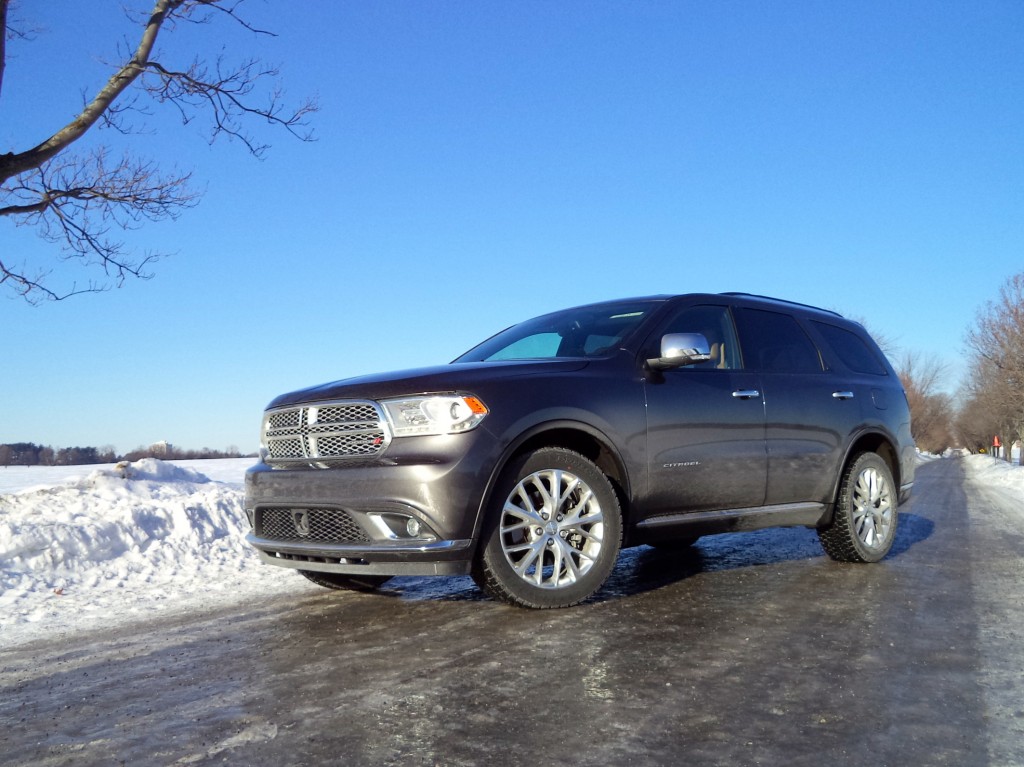
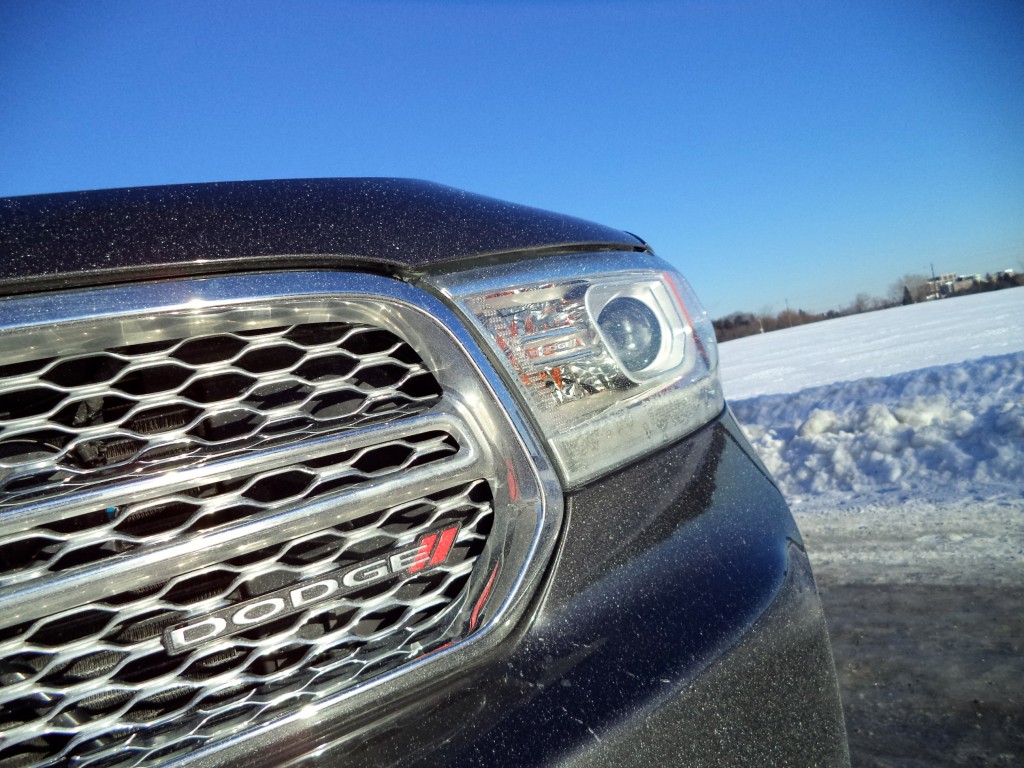
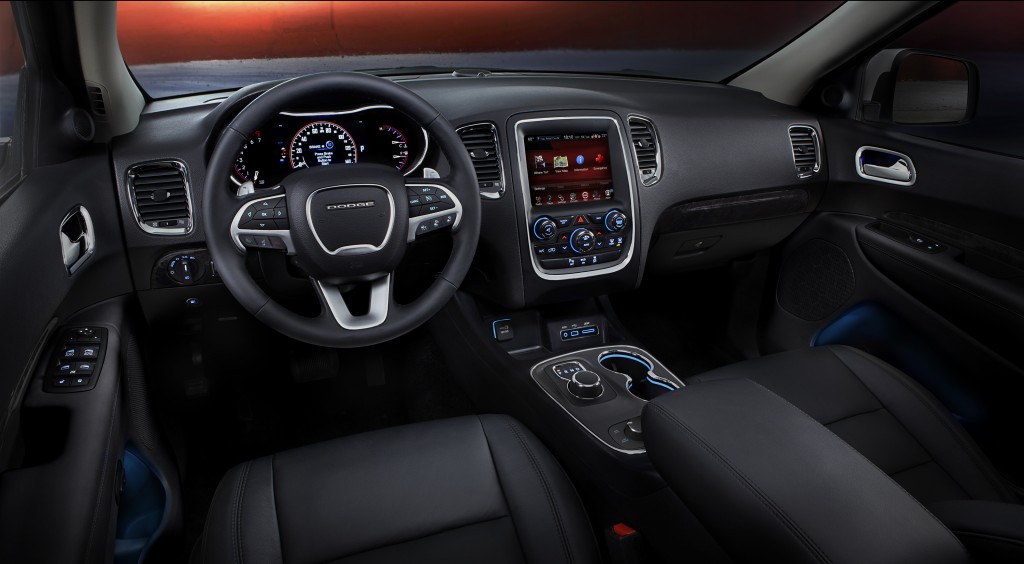
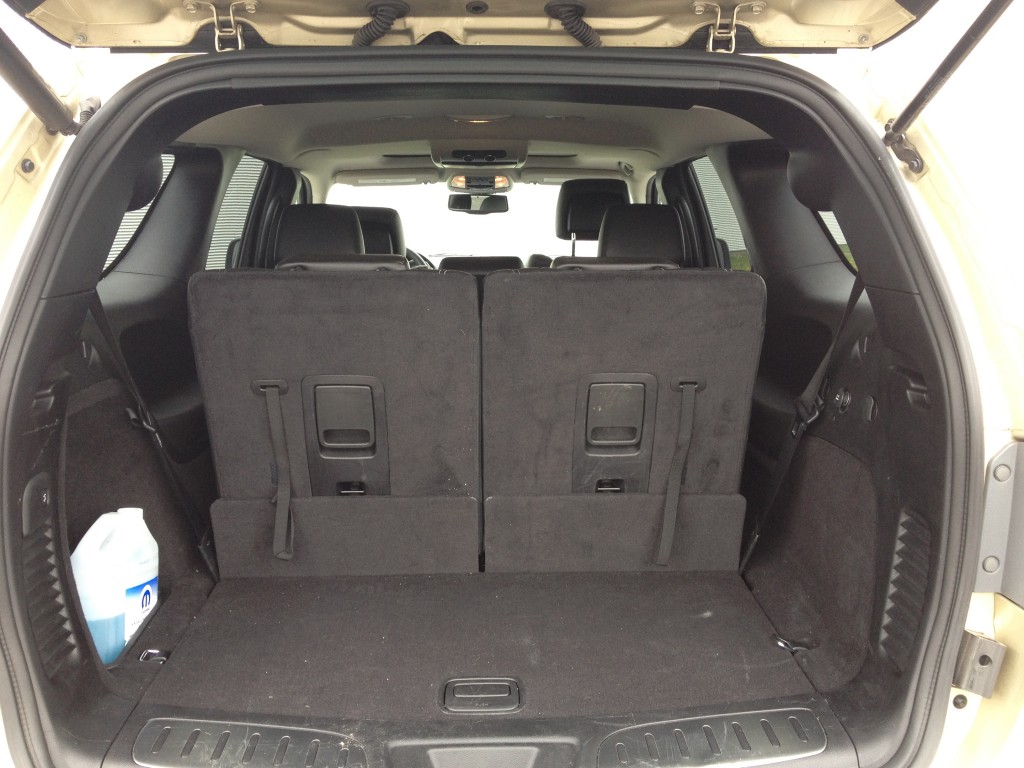
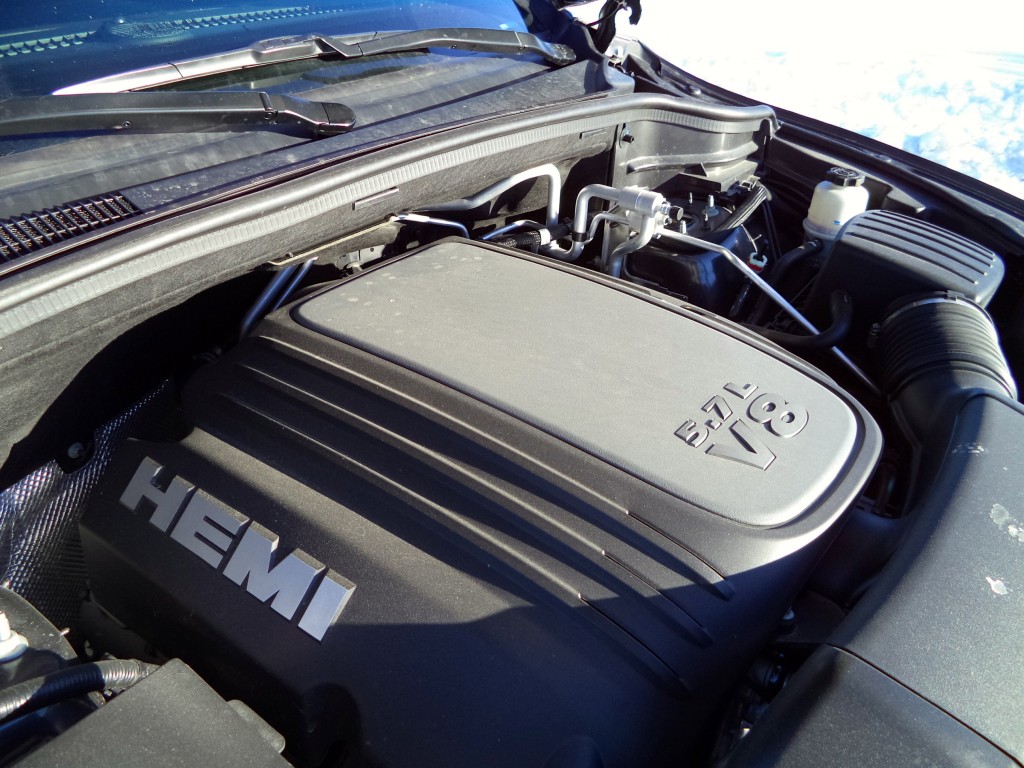
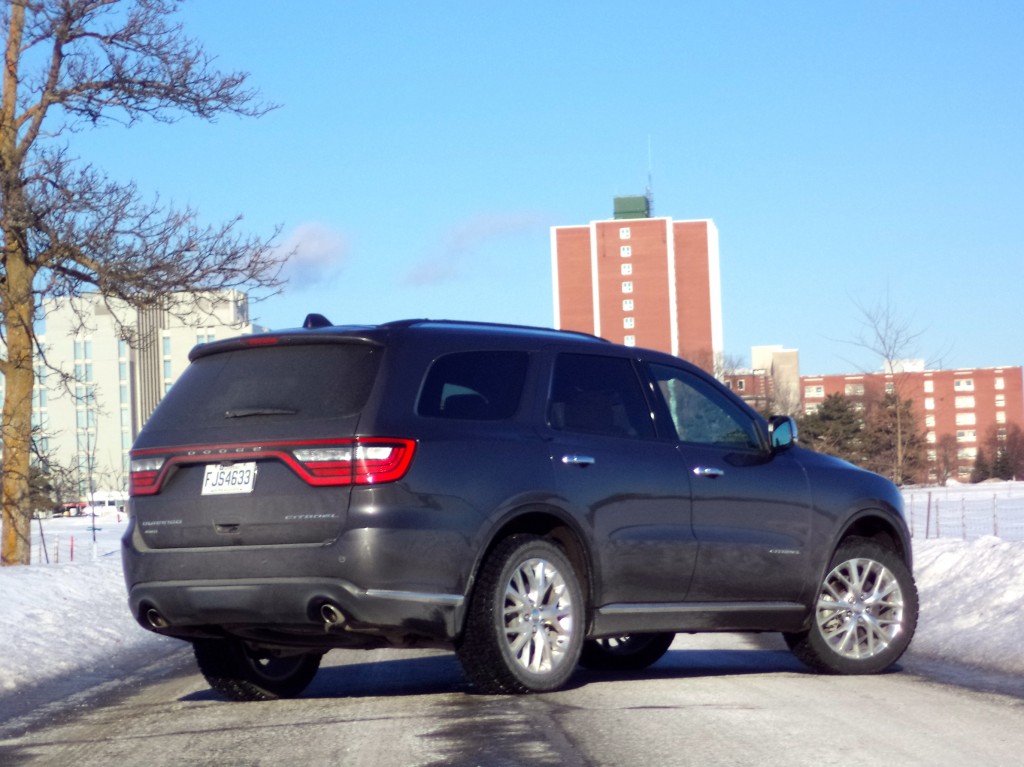
![[del.icio.us]](https://www.straight-six.com/wp-content/plugins/bookmarkify/delicious.png)
![[Digg]](https://www.straight-six.com/wp-content/plugins/bookmarkify/digg.png)
![[Facebook]](https://www.straight-six.com/wp-content/plugins/bookmarkify/facebook.png)
![[Google]](https://www.straight-six.com/wp-content/plugins/bookmarkify/google.png)
![[Reddit]](https://www.straight-six.com/wp-content/plugins/bookmarkify/reddit.png)
![[StumbleUpon]](https://www.straight-six.com/wp-content/plugins/bookmarkify/stumbleupon.png)
![[Twitter]](https://www.straight-six.com/wp-content/plugins/bookmarkify/twitter.png)
![[Email]](https://www.straight-six.com/wp-content/plugins/bookmarkify/email.png)